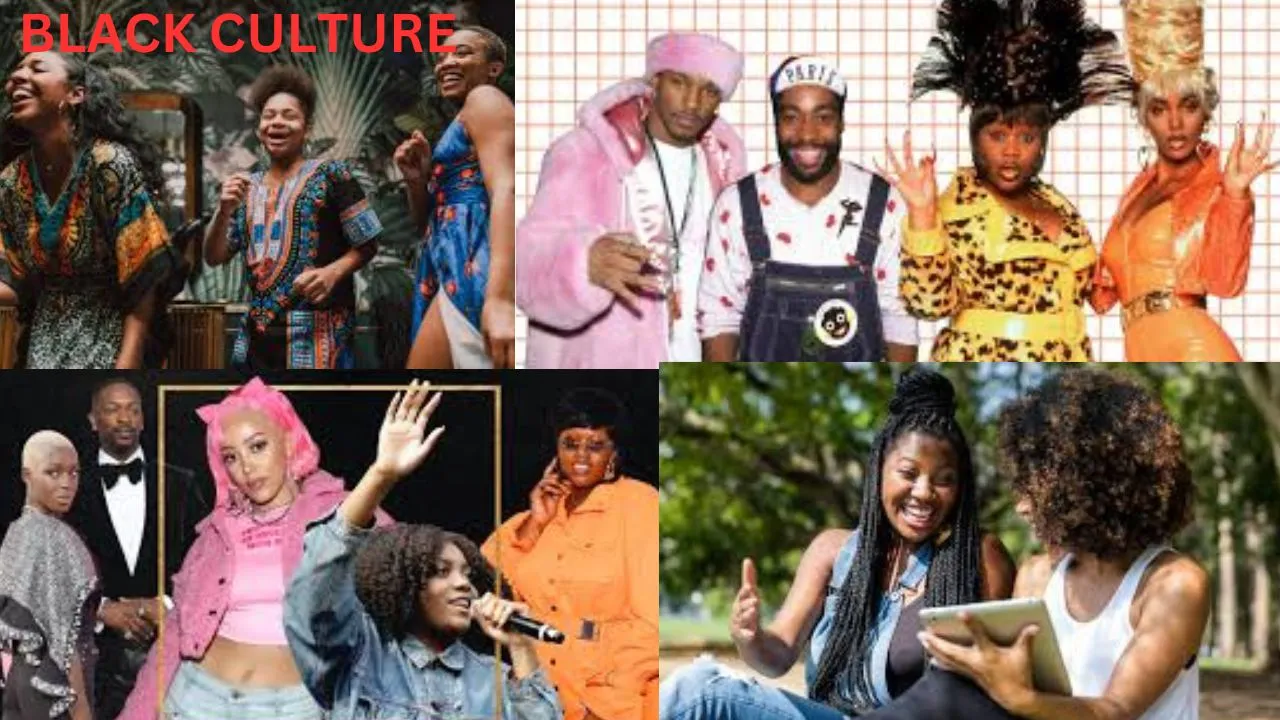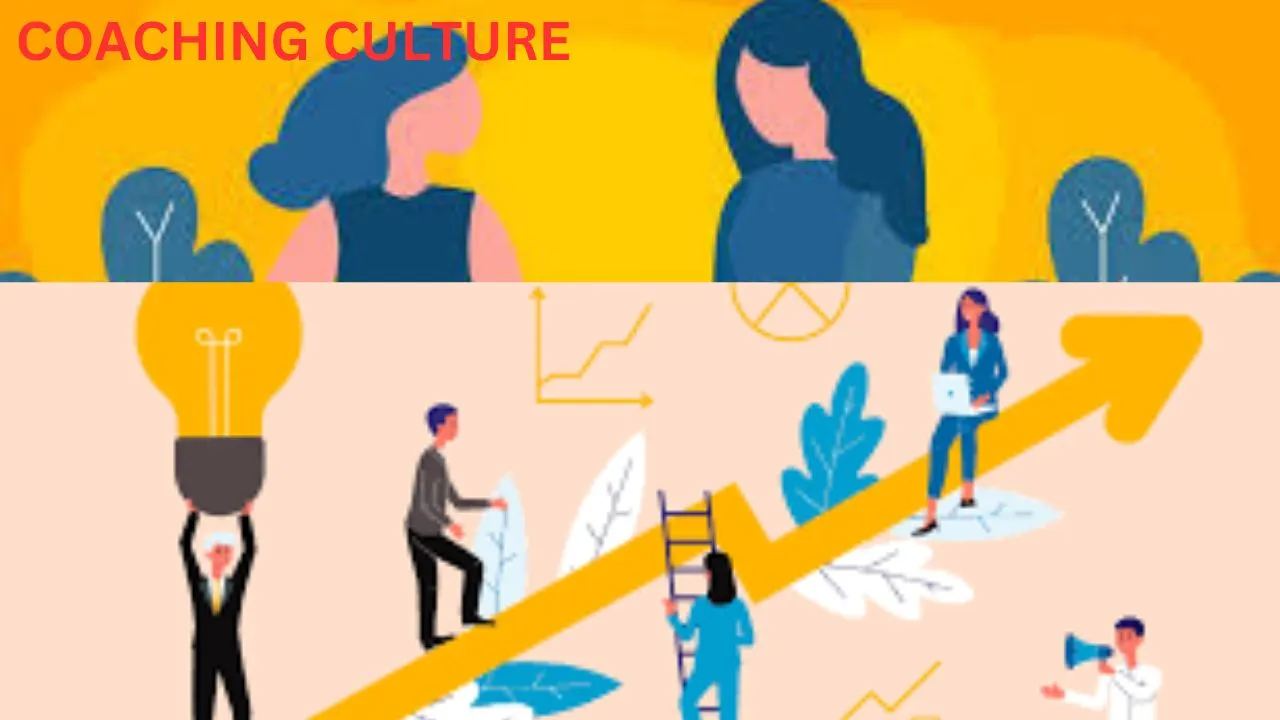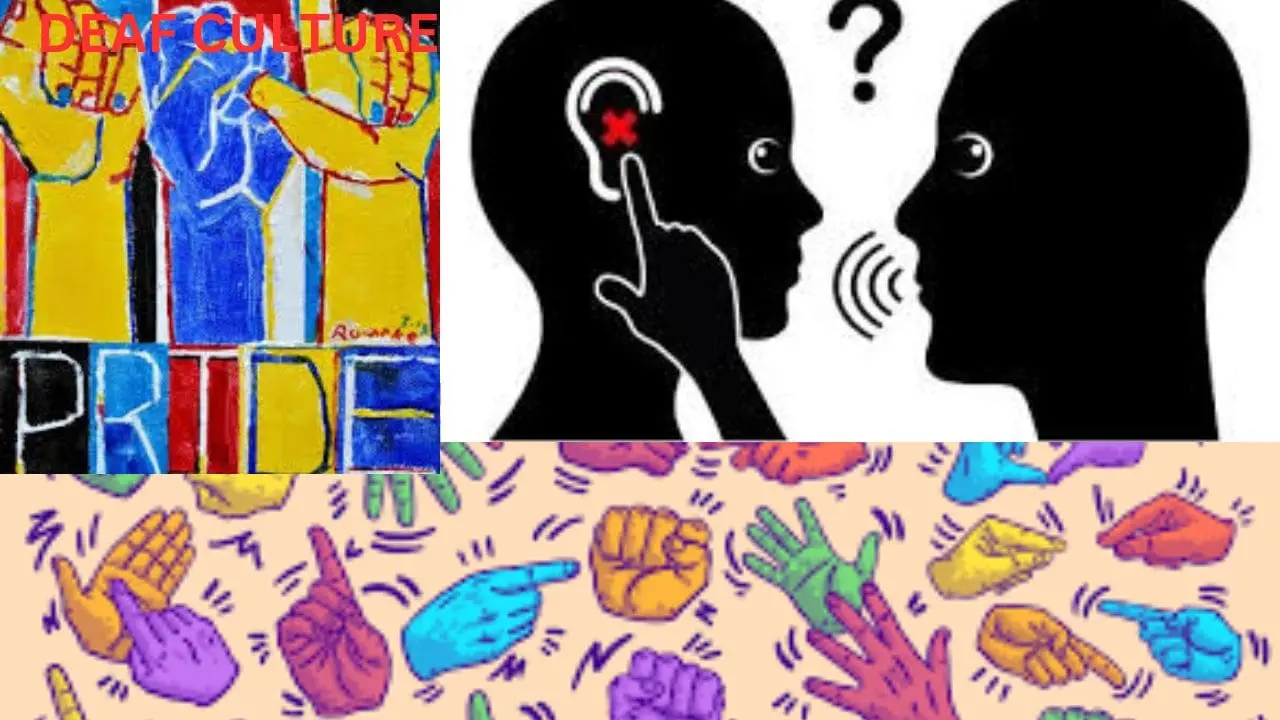
Deaf culture
Admin
- 0
Deaf culture is a rich and complex community that encompasses a unique way of life, language, and identity. It is important to understand that Deaf culture does not solely revolve around individuals who are deaf or hard of hearing; it extends to a larger community that shares common experiences, values, and traditions. In this article, we will delve into various aspects of Deaf culture and explore its significance in the lives of those who belong to this thriving community.
Definition
- Deaf culture refers to a distinct cultural group within society that is characterized by its use of sign language, shared experiences of deafness, and a sense of pride in its identity. It is not defined solely by the absence of hearing, but rather by the vibrant culture that has emerged within the Deaf community.
- Deaf culture is rooted in the belief that deafness is not a disability but a unique way of being in the world. It rejects the notion that deaf individuals should aspire to hear or conform to the norms of the hearing world, instead embracing sign language, visual communication, and the rich history and traditions that have developed within the Deaf community.
- One of the most fascinating aspects of Deaf culture is the strong sense of community that it fosters. Deaf individuals often find a deep connection with one another through shared experiences, language, and cultural practices. This sense of community extends beyond geographical boundaries, with Deaf people forming bonds and connections that transcend borders.
- Furthermore, Deaf culture is not static but continues to evolve and adapt to the changing world. With advancements in technology and communication, Deaf individuals have found new ways to connect and express themselves, while still holding onto the core values and traditions that define their culture. This ability to embrace innovation while preserving cultural heritage is a testament to the resilience and strength of the Deaf community.
Deaf Culture vs. Hearing Cultures
One of the defining aspects of Deaf culture is the stark contrast it poses to the dominant hearing cultures. Deaf individuals face unique challenges and experiences in a predominantly hearing world, which has led to the development of a distinct cultural identity.
Throughout history, deaf individuals have often been marginalized and excluded from mainstream society due to communication barriers. In contrast, Deaf culture celebrates sign language as a vibrant and expressive form of communication. ASL (American Sign Language) is the most commonly used sign language in the United States, and its use is at the heart of Deaf culture.
While hearing cultures tend to prioritize verbal communication, Deaf culture centers around visual communication and the use of sign language. This fundamental difference in communication style shapes the way deaf individuals interact with the world and forms the foundation of their cultural identity.
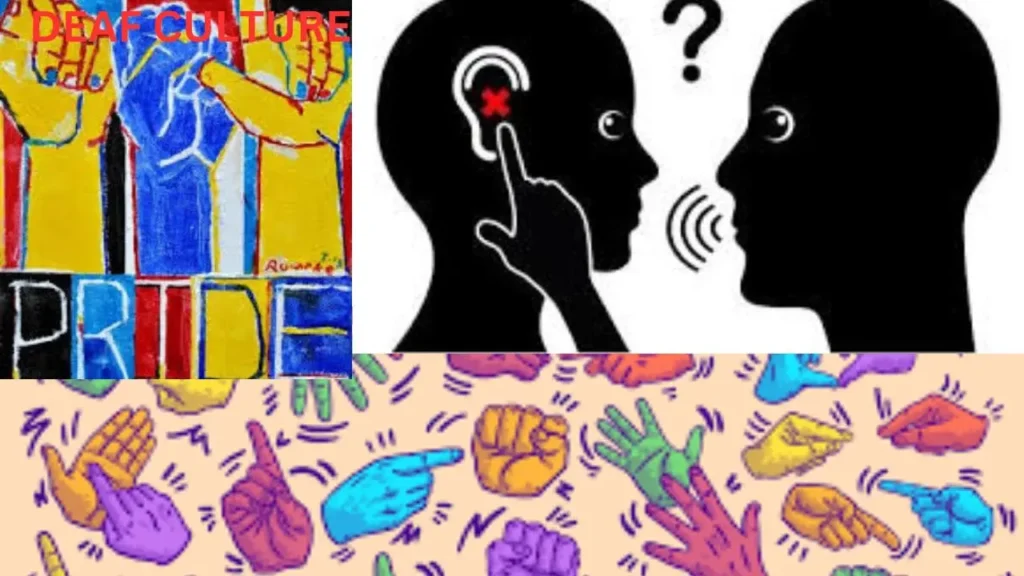
Deaf culture is rich with traditions and values that are passed down through generations. Deaf individuals often have a strong sense of community and belonging within their cultural group, fostering a supportive environment for one another. Deaf events and gatherings play a significant role in strengthening these bonds and celebrating their shared identity.
Moreover, Deaf art and literature have flourished as unique forms of expression within the community. Visual arts, such as deaf-centric films and paintings, often convey powerful messages about deaf experiences and perspectives. Deaf literature, including poetry and storytelling, serves as a means of preserving history and sharing narratives that resonate with the deaf community.
Deaf Culture in ASL
ASL is the lifeblood of Deaf culture and plays a crucial role in communication within the Deaf community. It is not simply a linguistic tool; it is a way of life, a means of self-expression, and an integral part of Deaf culture.
ASL is a visual language that relies on hand gestures, facial expressions, and body movements to convey meaning. Deaf individuals take great pride in their fluency in ASL and view it as a cornerstone of their cultural identity.
ASL is not just a language; it is a vibrant and dynamic mode of communication that allows for the expression of nuance, emotion, and personal experiences. It fosters a strong sense of community and connection among Deaf individuals, providing a common language that transcends geographical and cultural boundaries.
Deaf Culture Center
Deaf culture centers serve as important hubs within the community, providing Deaf individuals with a space to gather, connect, and celebrate their unique cultural heritage. These centers offer a wide range of programs and services tailored to the needs and interests of the Deaf community.
Deaf culture centers often host social events, workshops, and classes focused on ASL and Deaf history and culture. They provide resources and support for Deaf individuals and their families, promote advocacy and awareness, and act as a bridge between the Deaf and hearing worlds.
Deaf Culture Tradition
Deaf culture is steeped in rich traditions that have been passed down through generations. These traditions provide a sense of belonging and continuity within the Deaf community, fostering a deep connection to its history and heritage.
One such tradition is the Deaflympics, an international sporting event specifically for Deaf athletes. The Deaflympics showcase the strength, skill, and determination of Deaf athletes from around the world while celebrating the unique abilities and contributions of the Deaf community to the world of sports.
Another cherished tradition is the use of name signs within the Deaf community. A name sign is a unique, personalized sign that represents an individual’s name or a defining characteristic. These signs are created by members of the Deaf community and play a significant role in fostering a sense of identity and cultural belonging.
Deaf Culture and Community
The concept of community lies at the very heart of Deaf culture. Deaf individuals find strength, support, and understanding within their community, which shares a bond grounded in shared experiences and mutual respect.
The Deaf community offers a network of social connections, resources, and cultural understanding that helps individuals navigate the challenges and triumphs of life as a Deaf person. It provides a safe space where Deaf individuals can feel understood, accepted, and valued for who they are.
Within this tight-knit community, Deaf individuals not only find common ground but also work together to advocate for their rights and strive for equal access to education, employment, and other essential services. Building on the foundations of Deaf culture, the Deaf community fosters a sense of empowerment, pride, and resilience.
Concept of Deaf Culture
The concept of Deaf culture challenges traditional notions of deafness as a deficiency or impairment. It recognizes the unique attributes and strengths of individuals within the Deaf community and celebrates deafness as a valuable and meaningful part of human diversity.
Understanding Deaf culture requires recognizing that being Deaf is not something that needs to be fixed or cured. It is an identity to be embraced, celebrated, and respected. Deaf culture thrives on shared experiences, language, and cultural practices that bind individuals together in a strong and vibrant community.
Values of Deaf Culture
- Sign Language: ASL serves as the core of Deaf culture, providing a means of communication and fostering a sense of identity and belonging.
- Respect for Visual Communication: Deaf culture values visual communication styles, placing significance on facial expressions, body language, and eye contact in conversations.
- Community: The Deaf community is a vital part of Deaf culture, offering support, understanding, and a sense of belonging for individuals.
- Deaf Identity: Deaf culture emphasizes viewing deafness as an integral part of one’s identity and embracing the unique qualities and experiences it brings.
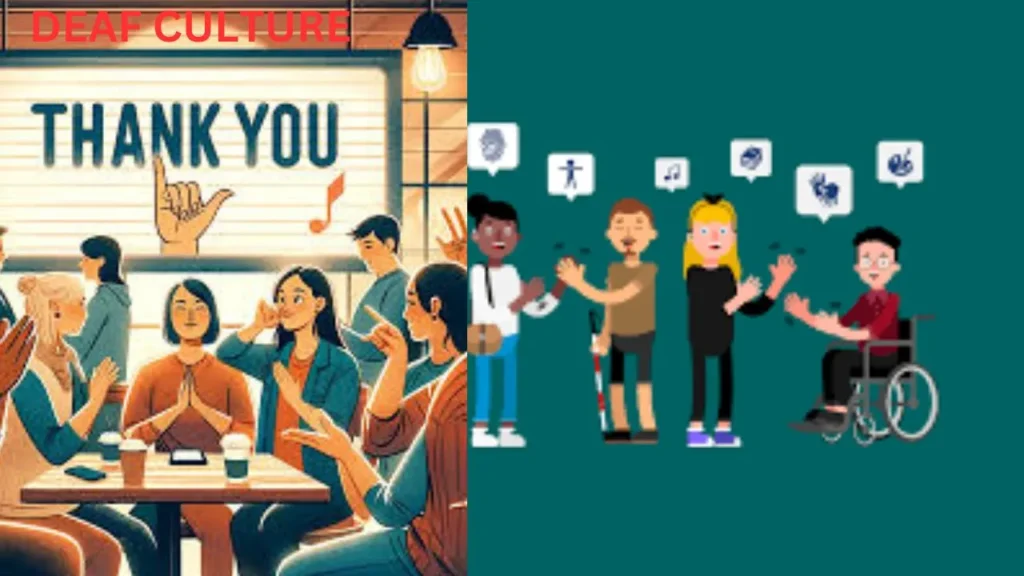
Elements of Deaf Culture
ASL
American Sign Language is the primary language of Deaf culture, enabling deaf individuals to communicate and express themselves in a visual and vibrant manner.
Cultural Traditions
Deaf culture has a rich history of customs and traditions, including the sharing of personal narratives, Deaflympics, and the creation of name signs.
Art and Literature
Deaf artists and writers contribute significantly to the cultural landscape, crafting poetry, visual art, and works that reflect their unique perspectives and experiences.
Cultural Behaviors
Deaf culture embraces specific behaviors like direct eye contact, signing while walking, and participating actively in group conversations.
Cultural Pride
Deaf individuals take immense pride in their cultural identity, celebrating their community, language, and artistic expressions.
Cultural Behaviors of Deaf Culture
Deaf culture is characterized by unique behaviors that are deeply ingrained in the community. These behaviors stem from the community’s reliance on visual communication and the shared experiences of deafness. Understanding and respecting these cultural behaviors can help foster effective communication and mutual understanding between the Deaf and hearing worlds.
One such behavior is direct eye contact during conversations. Deaf individuals rely heavily on visual cues, including eye contact, to maintain effective communication. Maintaining eye contact while signing shows respect and engagement in conversations within the Deaf community.
Another common behavior is signing while walking. Deaf individuals often use sign language to communicate while on the move, utilizing the visual nature of signing to convey messages efficiently and effectively.
Active participation in group conversations is also highly valued in Deaf culture. Group discussions provide a platform for exchanging ideas, sharing experiences, and fostering connections within the community.
Conclusion
Deaf culture is a rich tapestry of history, language, traditions, and shared experiences that forms the backbone of a vibrant and thriving community. It challenges societal norms, celebrates diversity, and fosters a sense of belonging for individuals who are deaf or hard of hearing. By understanding and appreciating Deaf culture, we can foster inclusivity, respect, and communication across all cultures and within our society as a whole.
